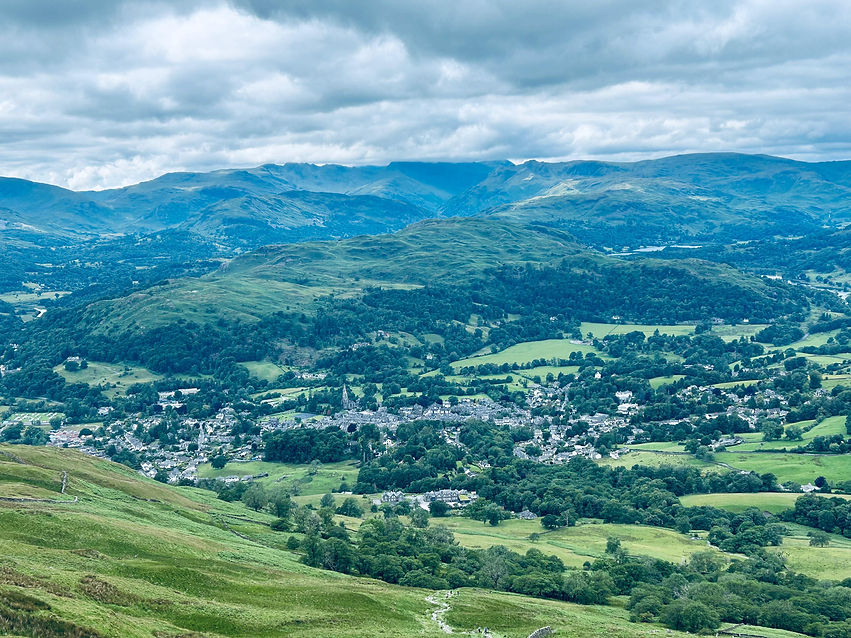

.png)
THE LAKE DISTRICT
The Lake District, in northwest England, is a landscape of poetic beauty, home to rolling green hills, mirror-like lakes, and timeless stone villages. A UNESCO World Heritage site, it has inspired generations of writers and artists, from Wordsworth to Beatrix Potter. Visitors come to hike its fells, cruise on Lake Windermere, and breathe in the serene countryside air. With cozy inns, sheep-dotted valleys, and ever-changing skies, the Lake District offers a peaceful yet dramatic experience rooted in nature, history, and quiet English charm.

The Lake District is as rich in culinary heritage as it is in natural beauty, offering a range of traditional foods that reflect its farming roots and local produce. One of the most famous regional delicacies is Cumberland sausage, a coiled, peppery pork sausage that has earned protected status. Herdwick lamb, reared on the Cumbrian fells, is prized for its distinctive flavour, thanks to the hardy sheep that graze freely on the uplands. Sticky toffee pudding, believed to have originated in the village of Cartmel, is a beloved dessert served in pubs and restaurants across the region. Local cheeses, such as the creamy blue-veined, Blue Whinnow or the tangy Crofton, showcase the area’s dairy tradition. Also enjoy freshly baked gingerbread from Grasmere, artisan chutneys, and locally brewed ales and gins made using Lake District botanicals. Together, these flavours offer a true taste of the landscape and culture of Cumbria.

Woodland plays a vital role in the landscape of the Lake District National Park, currently covering 13% of its area. Of this, 95 km² is owned or managed by the Forestry Commission, while 120 km² consists of broadleaf woodland, making up 64% of all the park’s woodland. Additionally, 6.2 km² of woodland is under the care of the National Park Authority. Looking ahead, there is an ambitious goal to increase overall woodland cover to 17% by the year 2050, supporting biodiversity, climate resilience, and the natural beauty of the region.

Despite its name, the Lake District contains only one officially named lake, Bassenthwaite. Lake while the rest are classified as meres, waters, or tarns. In total, there are 16 major bodies of water, each with its own unique charm and character. Among the most important are Windermere, the largest and most visited; Ullswater, known for its scenic beauty and inspiration to poets; and Derwentwater, nestled near Keswick and surrounded by wooded hills. Coniston Water and Buttermere are also popular for their tranquil settings and outdoor activities. These lakes form the heart of the region, shaping its landscape, economy, and cultural identity.
